| & I'm back. Maybe. No, definitely. The procrastination will come to an end. It has come to an end. What better way to end it than with the problem that started it? This post is about our 2nd day in Gyalthang (our 1st day was described long ago here: Gyalthang - Day 1 / 1. Tag). It was supposed to be a post about a proper Tibetan temple, but when I tried to research its background, I found ... nothing. That frustrated me so much that I fell into a deep depression which prevented me from writing any long-form article. (Well, probably not, but I want to have some rationalisation for my procrastination.) Until now. | Bin wieder da. Vielleicht. Nee, wirklich. Die Aufschieberitis muß ein Ende haben. Sie wird ein Ende haben. & was wäre besser als sie damit zu beenden, womit sie anfing? Dieser Beitrag beschreibt unseren 2. Tag in Gyalthang (den 1. Tag findet man hier: Gyalthang - Day 1 / 1. Tag). Es sollte eigentlich um einen echt tibetischen Tempel gehen, aber als ich nach Informationen dazu suchte, fand ich ... nichts. Das frustrierte mich derart, daß ich in tiefste Depression verfiel, die mich daran hinderte, irgendetwas längeres zu schreiben. (Naja, vermutlich nicht, aber man braucht halt eine Erklärung für die eigene Faulenzerei.) Bis jetzt. |
|---|
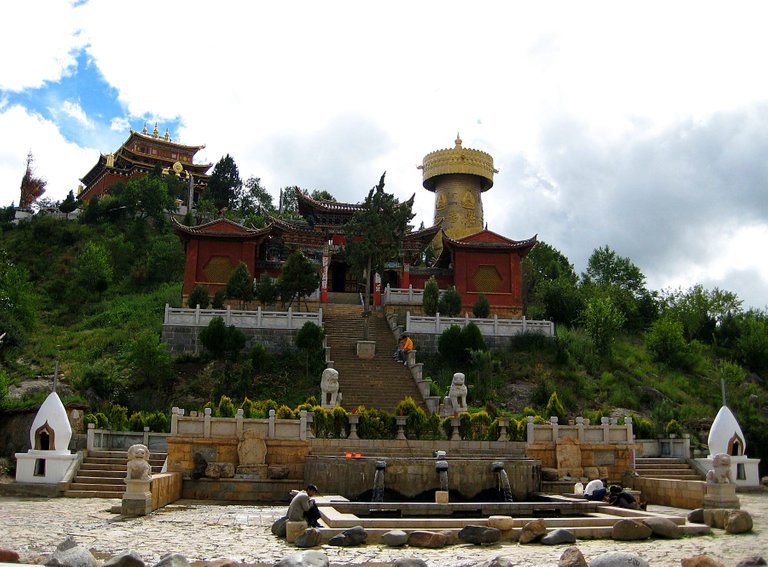
| By now, with the help of a Chinese friend, I found at least one source with some info. It says that the temple itself was built under emperor Kangxi in the Qing Dynasty. But that is just a review on a travel site. In another travel review I read that the temple itself might have been built in 2007. But there are several temple buildings on the hill, so who knows... Else, still nothing. In my post about the 1st day I already wrote about the fact that what I had believed was a nice old-fashioned Tibetan town, actually turned out to be some kind of Tibetan Disney. Therefore, it's fair to assume that most of what can be seen in context with the Golden Temple is also of fairly recent origin. | Immerhin habe ich inzwischen mit Hilfe einer chinesischen Freundin ein kleines bißchen was herausgefunden. Der Tempel selber soll wohl unter Kaiser Kangxi in der Qingdynastie erbaut worden sein. Die Quelle ist aber auch nur ein Reisebericht, & in einem anderen stand, daß der Tempel erst 2007 gebaut wurde. Es gibt allerdings mehrere Tempel auf dem Hügel. Nichts genaues weiß man nicht. In meinem ersten Gyalthangbericht schrieb ich schon, daß die nette, traditionell tibetische Stadt doch nur eine Touristenfalle war. Daher kann man wohl davon ausgehen, daß so ziemlich alles um den Goldenen Tempel auch erst in neuester Zeit entstand. |
|---|
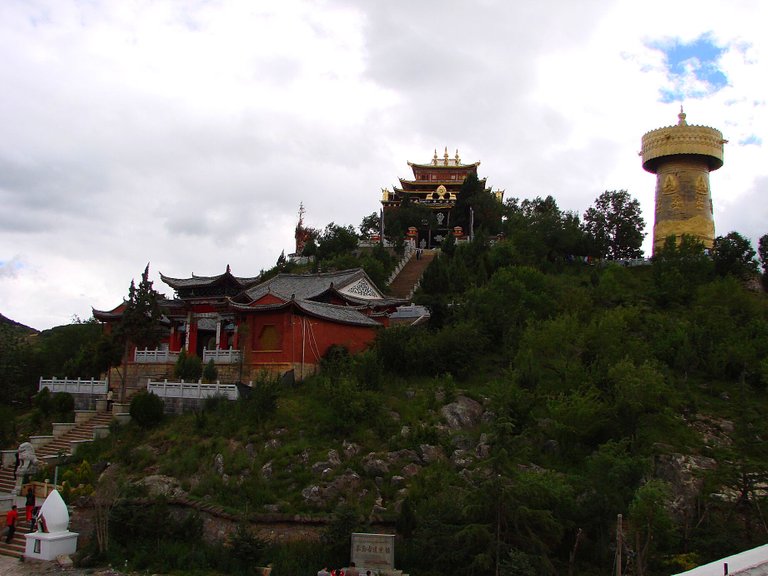
| In fact, I know that parts of that temple complex, located in the Daguishan Park, only were constructed in the last 15 years. It's quite probable that most of the temple complex, just like the Ganden Sumtseling Monastery, had been destroyed during the Cultural Revolution, & was only rebuilt in the 90's for tourism purposes. Just as unclear as its origin is the name. Beside Golden Temple, I also found Dukezong Temple, Guishan Temple or Big/Great Buddha Temple. Even so, there is still something to be enjoyed: | Bei Teilen des Tempelkomplexes im Daguishan Park weiß ich sogar, daß sie erst in den letzten 15 Jahren gebaut wurden. Es ist wahrscheinlich so, daß der Großteil des Tempelkomplexes während der Kulturrevolution zerstört worden war & erst ab den 90ern wiederaufgebaut wurde, genau wie das Gamden-Sumtsenling-Kloster. Wie das Baujahr ist auch der Name nicht ganz klar. Neben Goldener Tempel fand ich auch Dukezongtempel, Guishantempel oder Tempel des großen Buddha. Wie es auch sei, es gibt doch einiges zu bestaunen: |
|---|
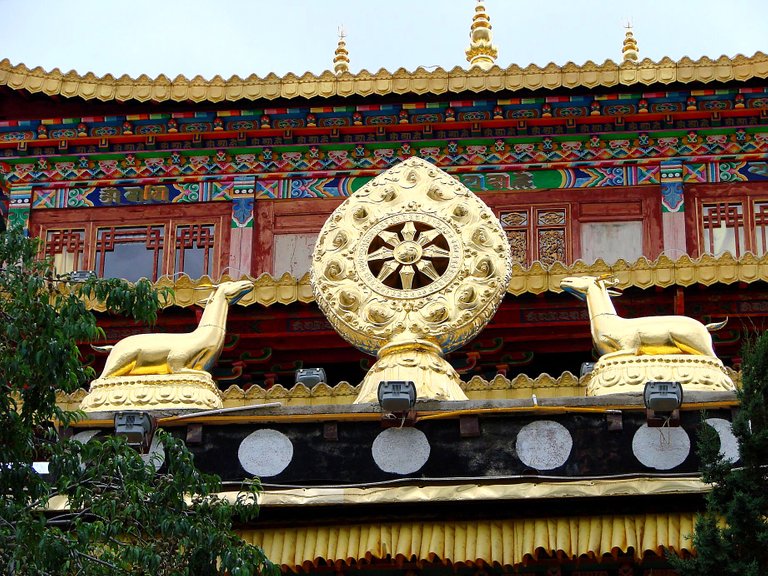
| That's what you see above the entrance to many (all?) Tibetan Buddhist temples or monasteries, 2 golden deer & the Dharma Wheel: "The eight-spoked wheel represents the first turning of the dharma wheel by the Buddha. The male and female deer on the right and left represent the male and female disciples who one-pointedly enjoy and take pleasure in listening to the teachings of the holy dharma." | Das ist, was man über den Eingängen vieler (aller?) tibetisch-buddhistischer Tempel oder Klöster sieht: 2 goldene Rehe & das Dharmarad. Angeblich soll das den Buddha repräsentieren, der das Dharmarad drehte, während die Rehe die Jünger sind, die den Lehren andächtig lauschen. |
|---|
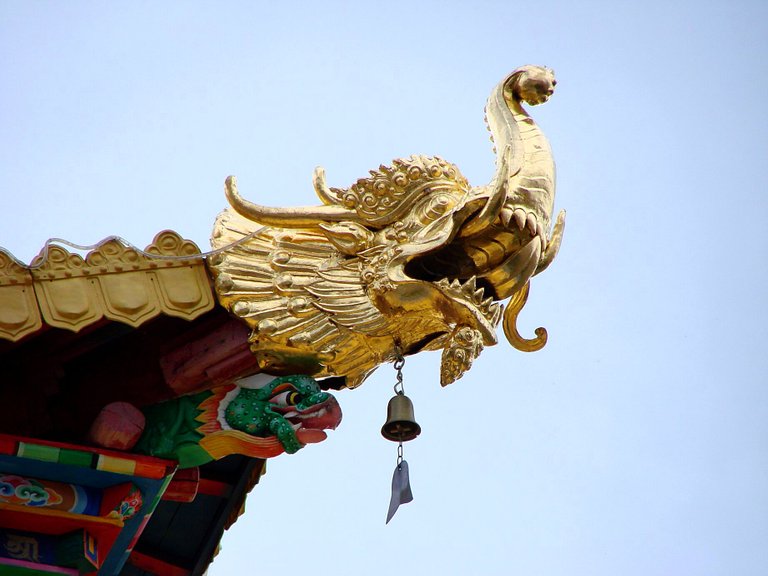
| A roof monster whose significance I couldn't find. The golden head seems to show a buffalo head with tusks & an elephant trunk. (Everything looking fairly new, btw.) | Ein Dachmonster, über das ich nichts herausfinden konnte. Scheint ein Büffelkopf mit Hauern & Rüssel zu sein. (Sieht übrigens recht neu aus.) |
|---|
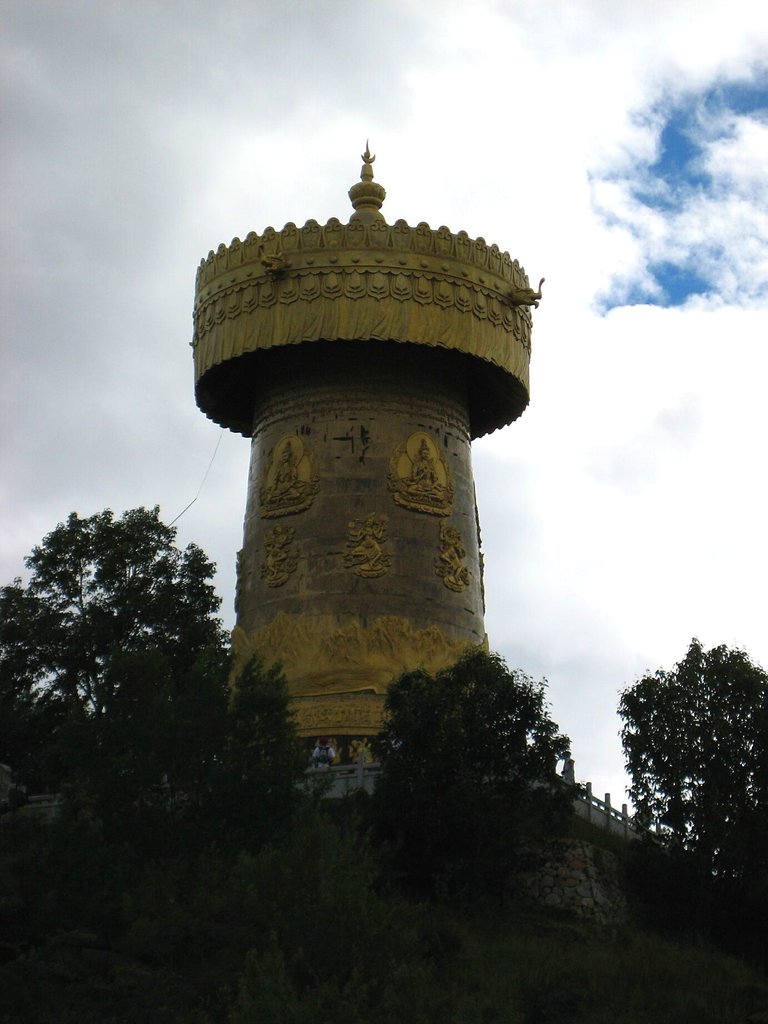
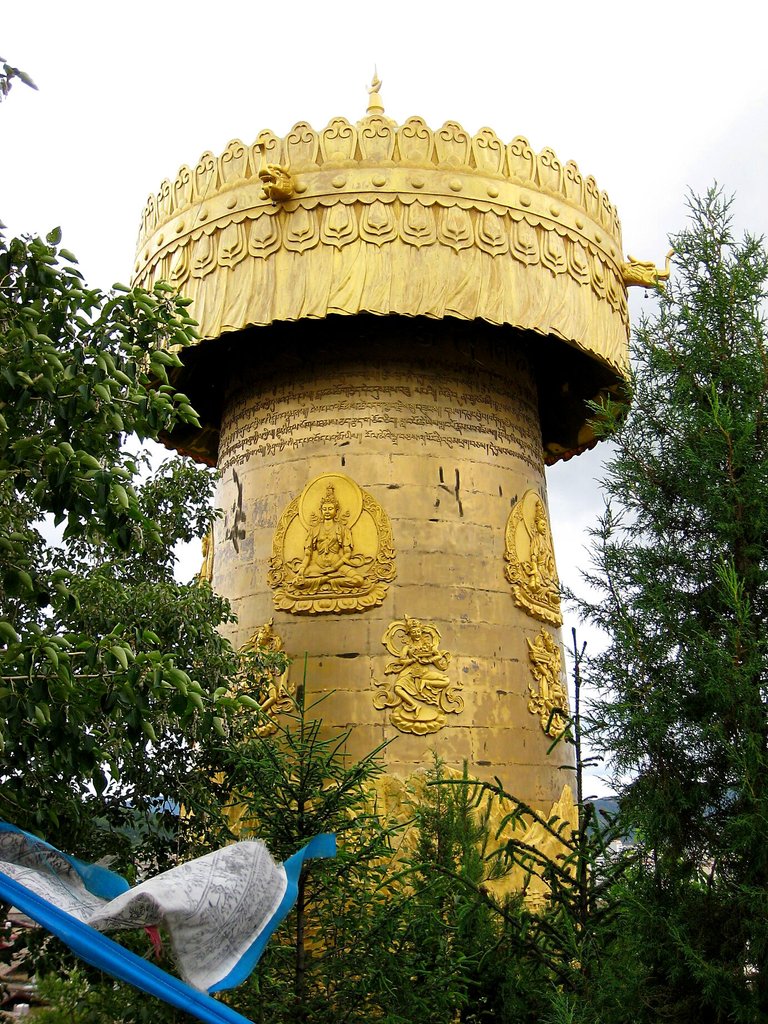
| The most obvious tourist attraction is the 'world's largest' prayer wheel. Its ancient origins reach as far back as 2002. You need several people to make it turn, although, considering it's supposedly over 20m high & weighs 60 tons, surprisingly few. I have 2 short videos of it turning, one during daytime & one at night. | Die herausragende Touristenattraktion ist die 'weltgrößte' Gebetsmühle. Ihre uralten Ursprünge reichen bis ins Jahr 2002. Man braucht mehrere Leute, um sie zu bewegen, wenn auch überraschend wenige, wenn man die Größe (>20m, 60t) bedenkt. Ich habe 2 Videos davon in Bewegung: am Tag & am Abend. |
|---|
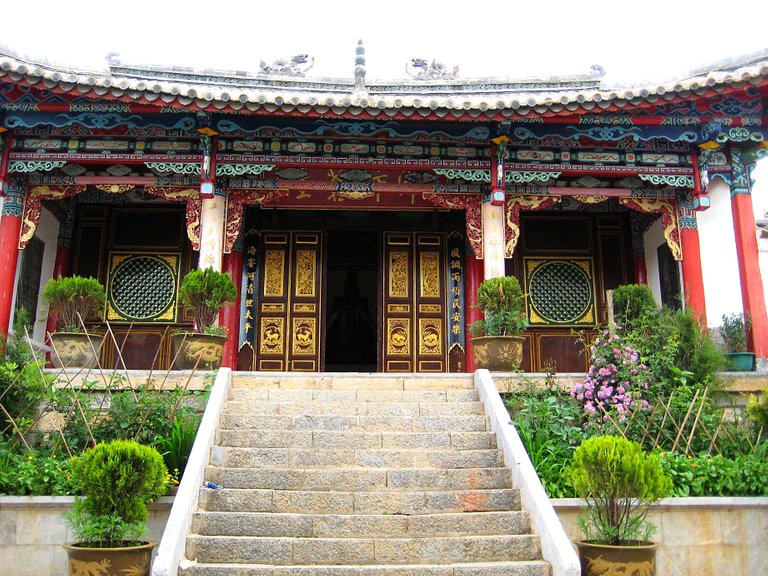
| Part of the complex is this very Chinese-looking temple. | Teil des Komplexes ist dieser sehr chinesisch aussehende Tempel. |
|---|
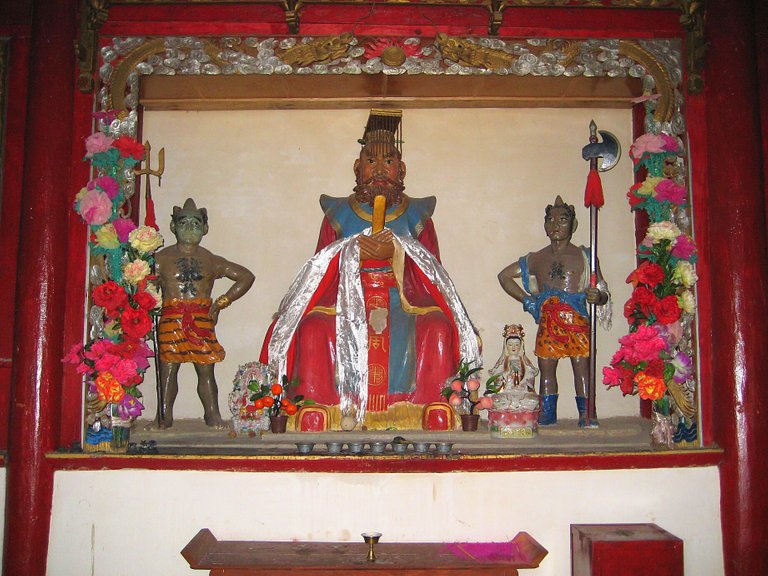
| Not only looking Chinese, it is. The above shows Guandi, a Chinese god of war. He was a general who died in the early 3rd century. In the Ming Dynasty, he was declared a god of war. The next picture could also be him in another iteration called Guan Gong, but don't quote me on that. | Sieht nicht nur so aus, ist es auch. Oben sieht man Guandi, einen chinesischen Kriegsgott. Er war ein General, der im frühen 3. Jahrhundert starb. In der Mingdynastie wurde er zum Gott erklärt. Das nächste Foto könnte auch ihn zeigen, aber aus mir unerfindlichen Gründen Guan Gong genannt. |
|---|
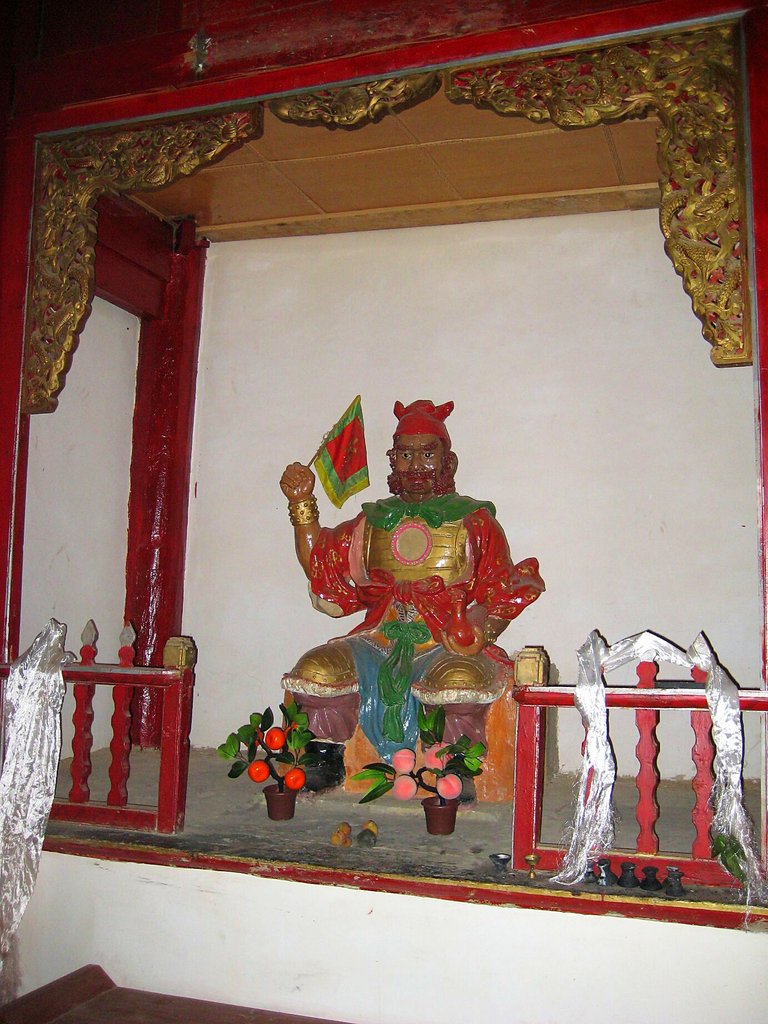
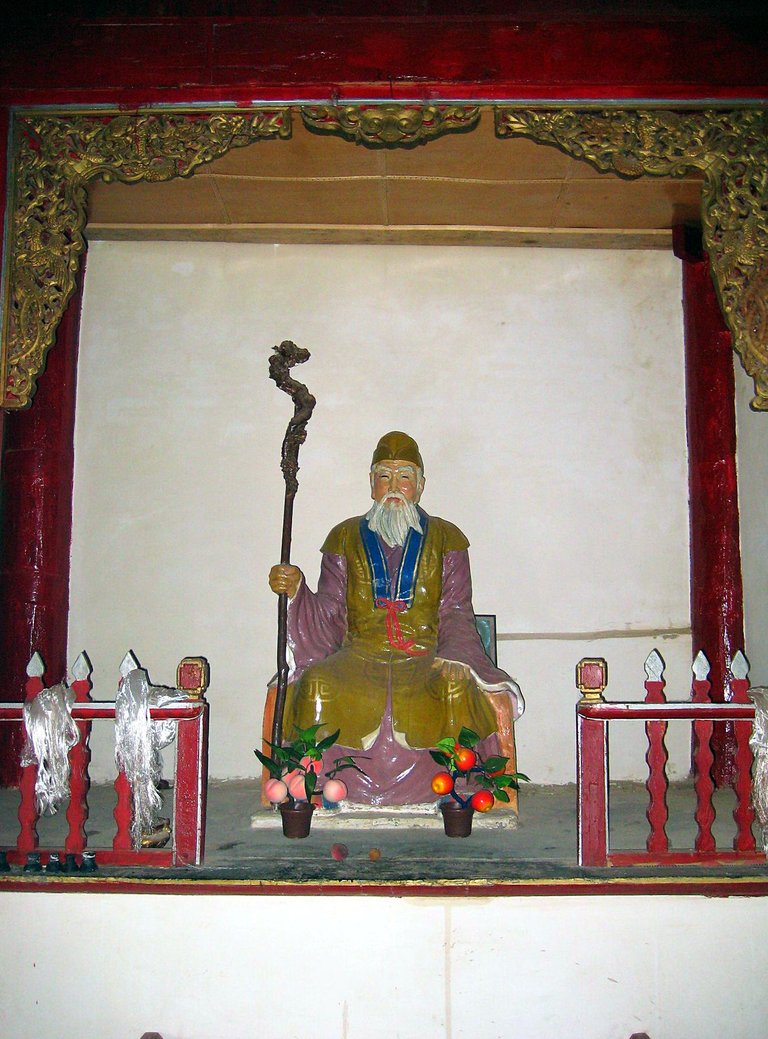
| Not sure about this one either. Could some god of fortune or a Taoist god called Taishang Laojun. Definitely some confusing religious back story. | Hier bin ich mir auch nicht sicher. Könnte ein Glücksgott sein oder ein taoistischer Gott namens Taishang Laojun. Bestimmt mit verwirrendem, religiösem Hintergrund. |
|---|
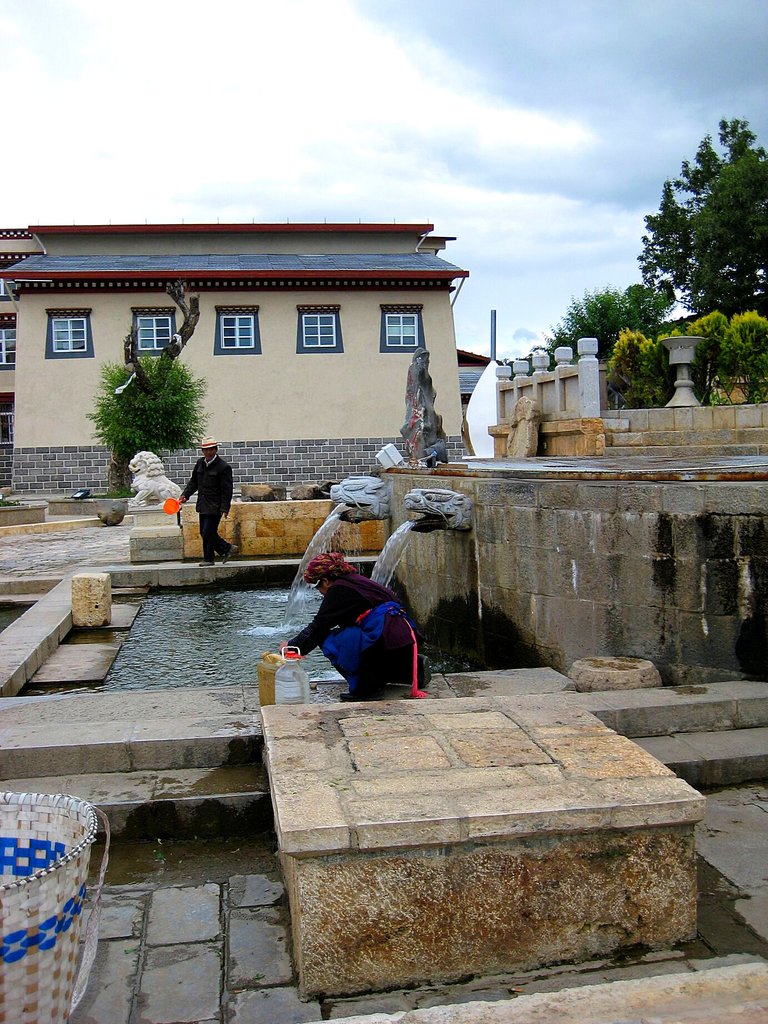
| At the foot of the temple hill is this water source. Either the water has some religious significance or some people want to save money on their water bill. | Am Fuß des Hügels findet sich diese Quelle. Entweder hat das Wasser religiöse Bedeutung oder einige Leute wollen an ihrer Wasserrechnung sparen. |
|---|
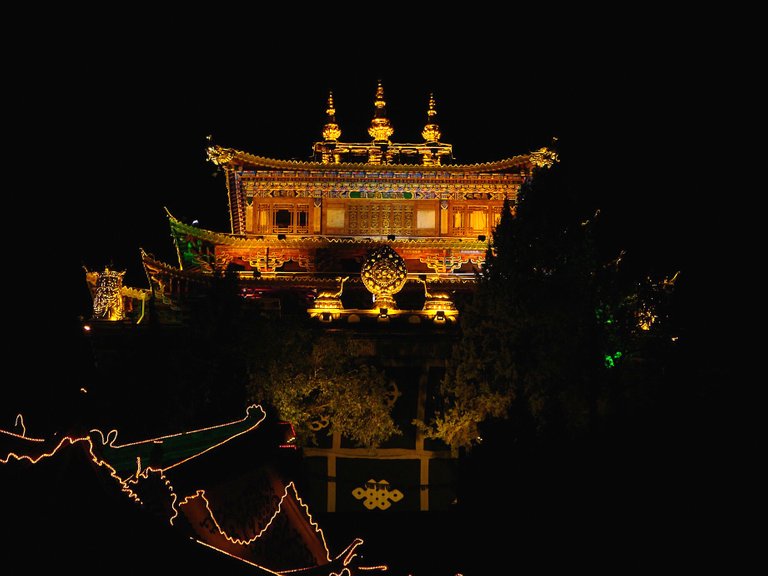
| When it was dark, I went back there to get some nice photos of the illuminated building. I'm just a sucker for night lights (even though it's huge waste of energy). | Als es dunkel war, ging ich nochmal hin, um Fotos der beleuchteten Gebäude zu machen. Bin nunmal geil auf Nachtlichter (auch wenn es enorme Stromverschwendung ist). |
|---|

| A rather uncommon green hue for the Chinese temple. Don't know, why. | Ein eher ungewöhnliches Grün für den chinesischen Tempel. Keine Ahnung, warum. |
|---|
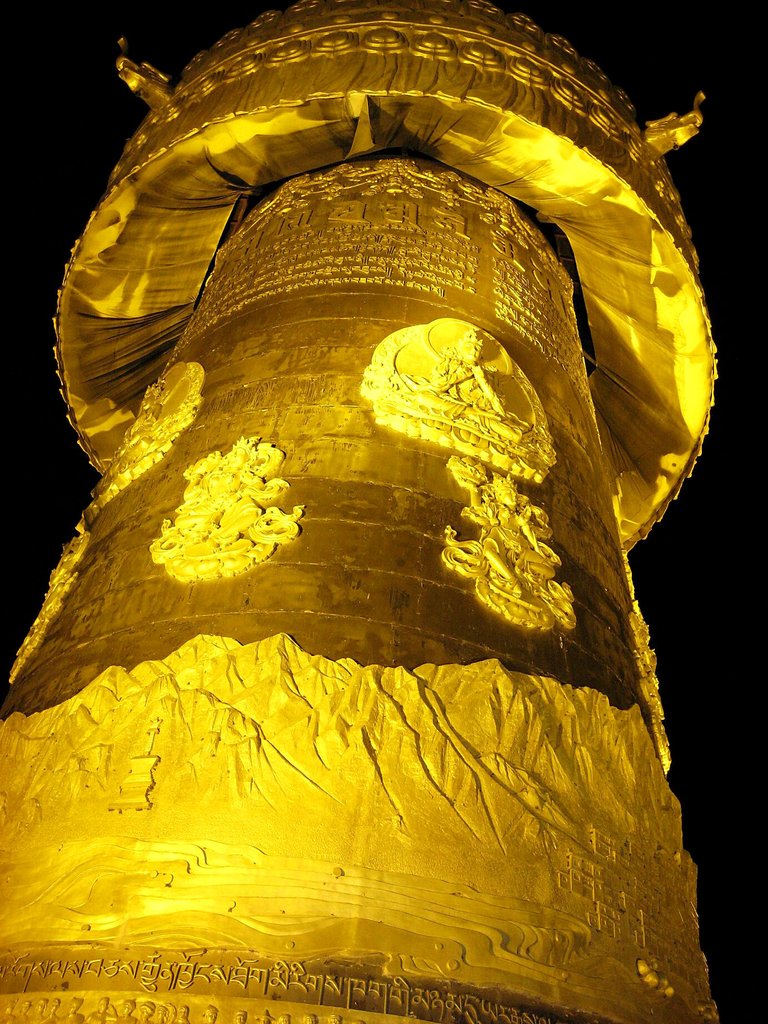
| The giant prayer wheel at night. | Die Riesengebetsmühle im Dunkeln. |
|---|
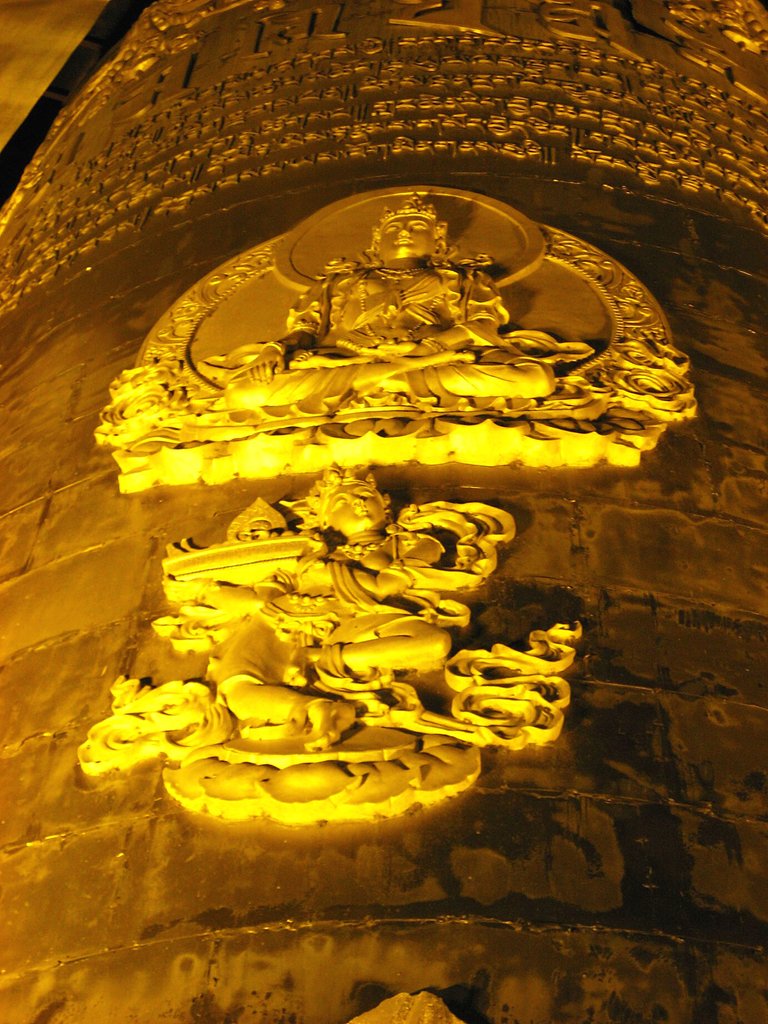
| Although it's just a friggin' tourist trap, the details are quite nice. | Auch wenn's nur eine Touristenfalle ist, sind die Details doch sehr interessant. |
|---|
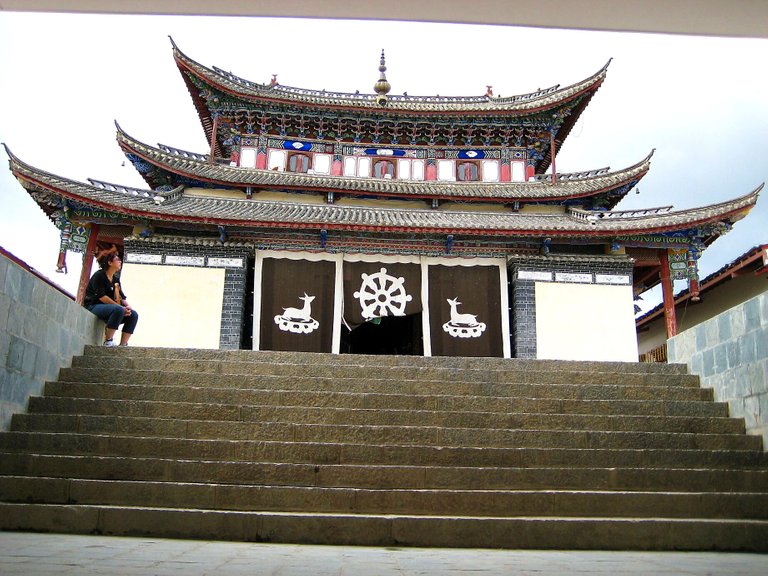

| & then there was this. Wasn't sure whether to include it with the Golden Temple, or not. It's not really part of the temple complex, but right beside it: it's the Diqing Red Army Long March Museum. This museum commemortates the fact that in 1936, the Red Army on its Long March came through Gyalthang. | & dann gab es da noch dies hier. War mir nicht sicher, ob es hier dazugehört, da nicht Teil des Tempelkomplexes. Aber es war direkt daneben: das Diqingmuseum des Langen Marsches der Roten Armee. Dort wird an den Durchmarsch der Roten Armee im Jahr 1936 erinnert. |
|---|
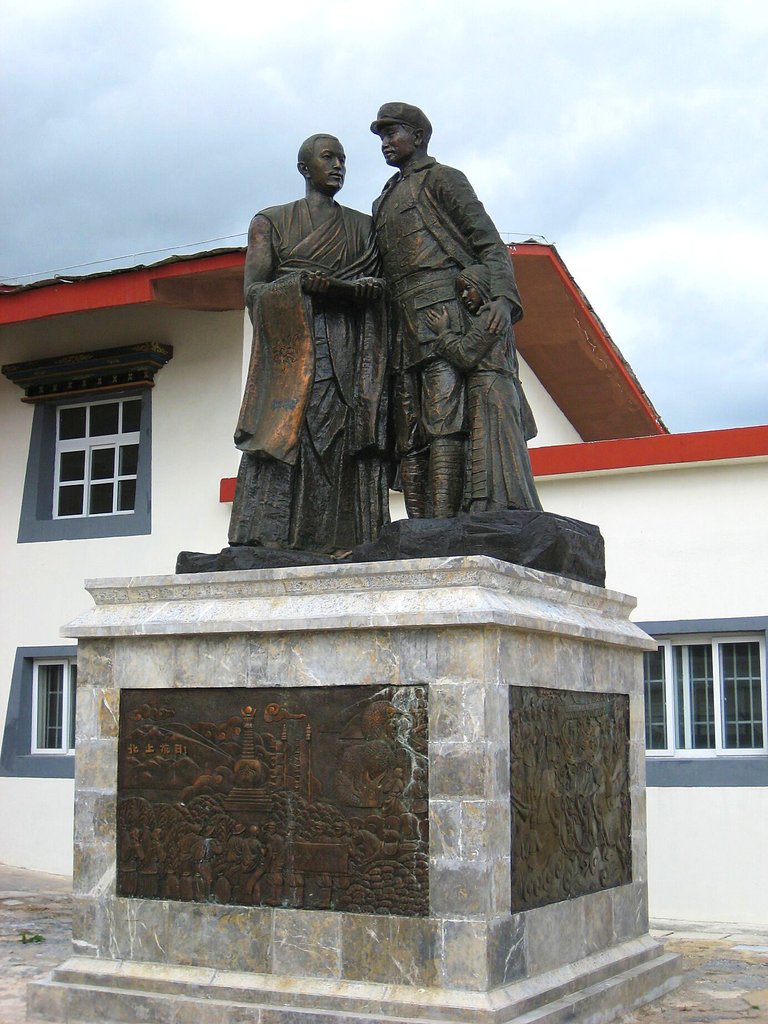
| A statue in the yard of the museum, showing how 'friendly' the local population was towards the Red Army. I'm sure all those guns the army was carrying had nothing to do with that. I'm pretty sure, we did not go inside of the army museum, so if you want to see the kitsch they have there, I refer you to the above link. | Eine Statue auf dem Innenhof des Museums, die zeigen soll, wie freundlich die Rote Armee in Gyalthang empfangen wurde. Die ganzen Waffen der Rotarmisten hatten bestimmt nichts damit zu tun. Glaube nicht, daß wir in das Museum selber gingen. Wer den dortigen Kitsch sehen will, muß sich also an das obige Link halten. |
|---|

| These last few pictures I sadly cannot place exactly. They are the photos I took right after we were at the museum, but I'm pretty sure they are not from the museum itself. The above shows Avalokitasvara, a bodhisattva who embodies the compassion of all Buddhas. Compassion was not really a main feature of the Red Army. | Jetzt noch einige Bilder, die ich leider nicht zuordnen kann. Die wurden aufgenommen, direkt nachdem wir am Museum waren, aber bin mir ziemlich sicher, sie sind nicht aus dem Museum. Das Foto oben zeigt Avalokiteshvara, den Bodhisattva des universellen Mitgefühls. Mitgefühl war nicht unbedingt ein Charakteristikum der Roten Armee. |
|---|
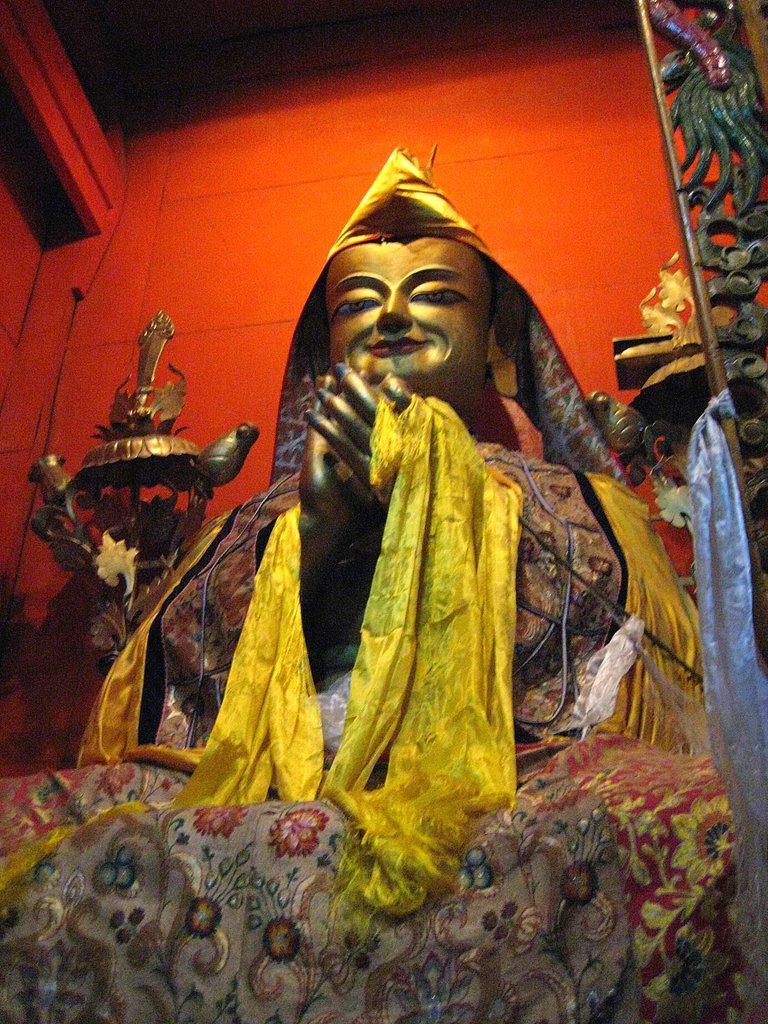
| Very Tibetan Buddhist. This probably represents some lama, but I have no idea whom. | Sehr tibet-buddhistisch. Dies zeigt wahrscheinlich einen Lama, aber weiß nicht, welchen. |
|---|

| & another multi-armed Buddhist god(-dess), but this one doesn't appear very compassionate. Could be Marici, related to sun & light. | & noch eine vielarmige buddhistische Gottheit, allerdings eher ohne Mitgefühl. Es könnte sich um Marici (Sonnenstrahl) handeln. Hat irgendwas mit Sonne & Licht zu tun. |
|---|
| So much for the Golden Temple in Gyalthang. Day 3 should follow soon. I want to post at least once a week again about my years in China. But for now, just a few more pics: | Das soll es gewesen sein mit dem Goldenen Tempel in Gyalthang. Tag 3 sollte bald folgen. Will wieder mindestens einmal pro Woche über meine Zeit in China schreiben. Jetzt aber erstmal noch ein paar Bilder: |
|---|
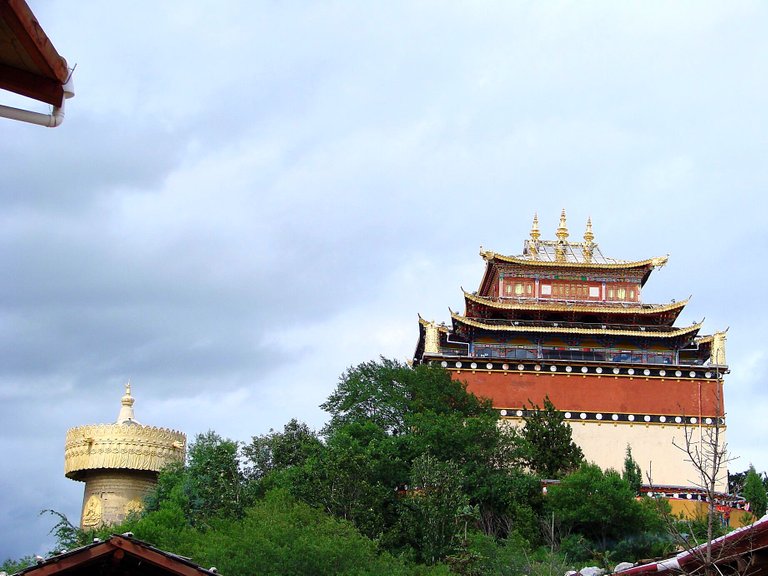
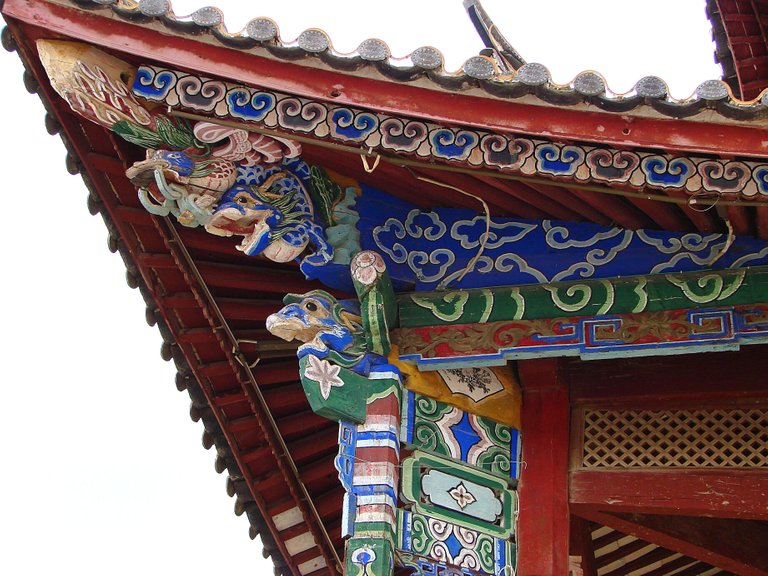
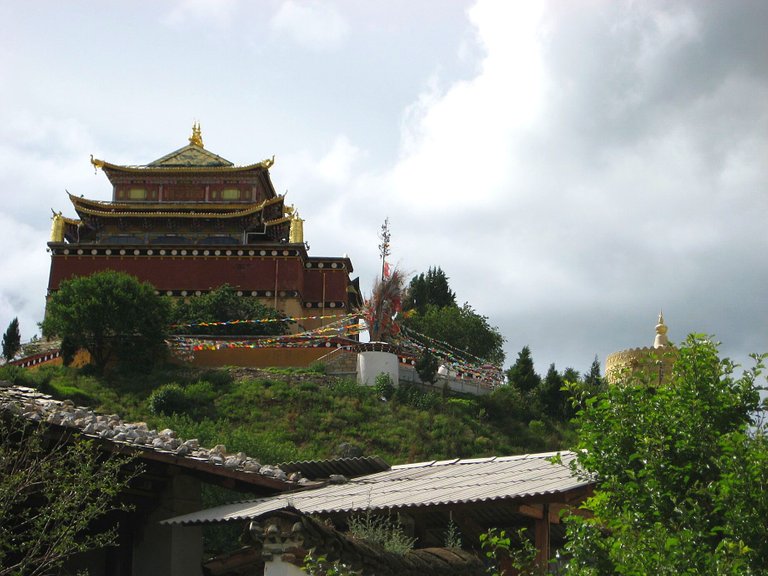
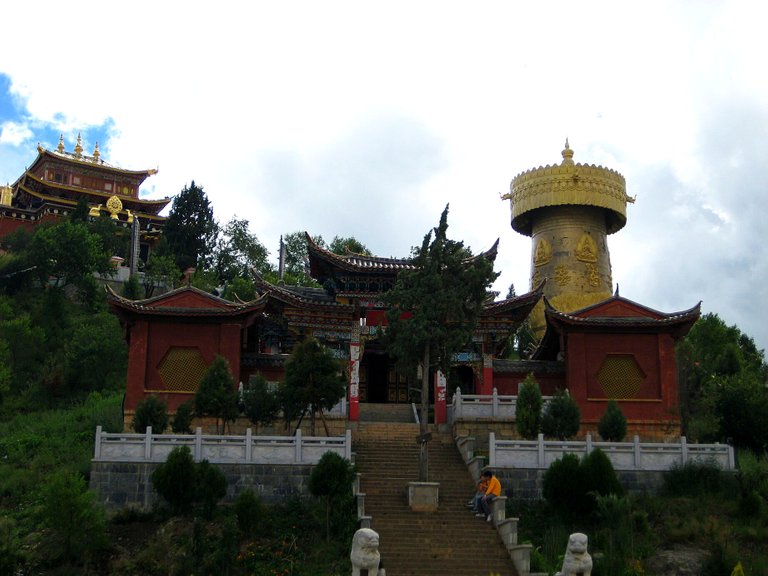
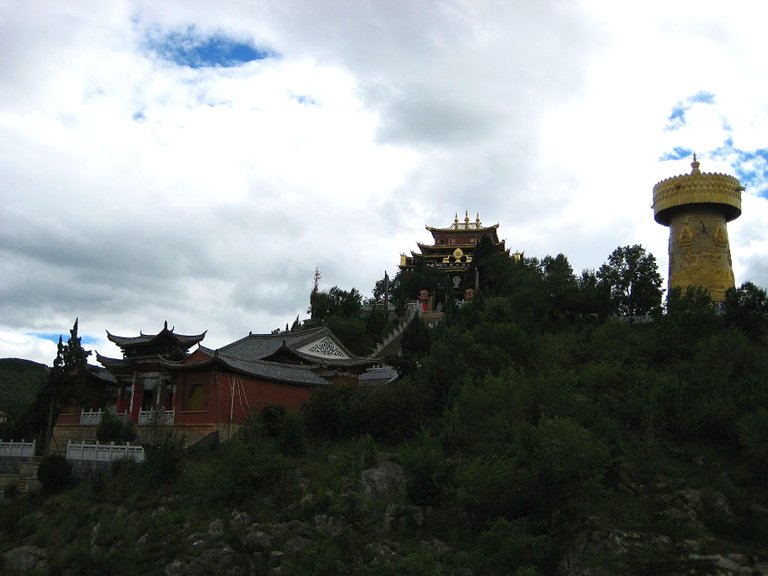
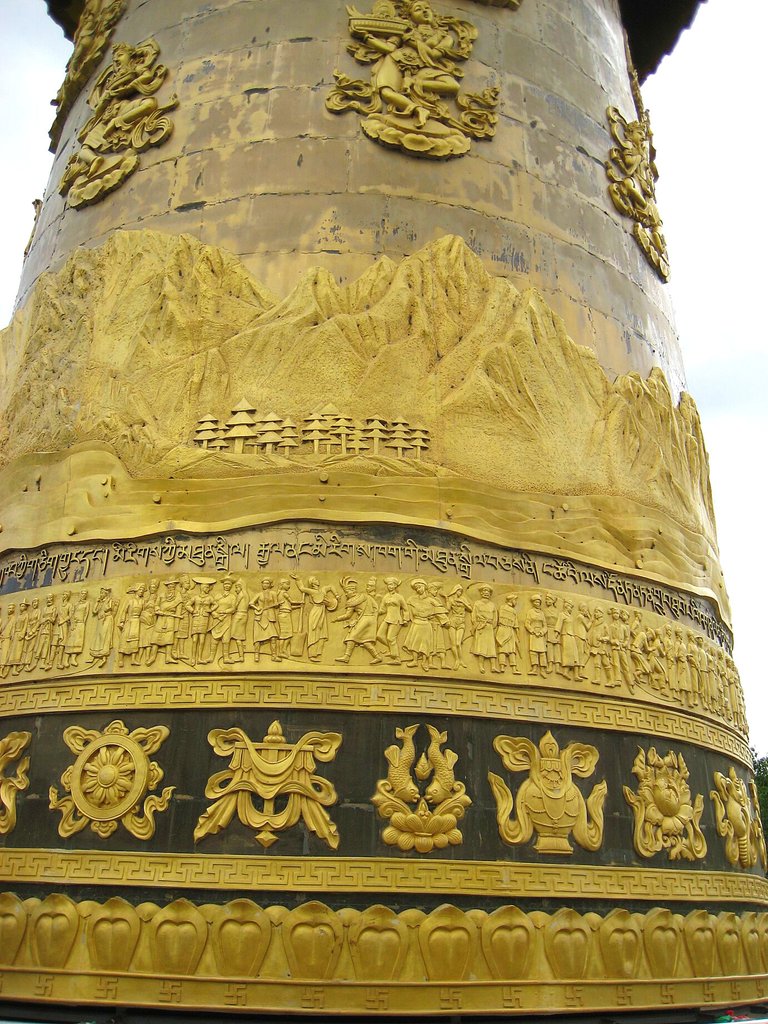
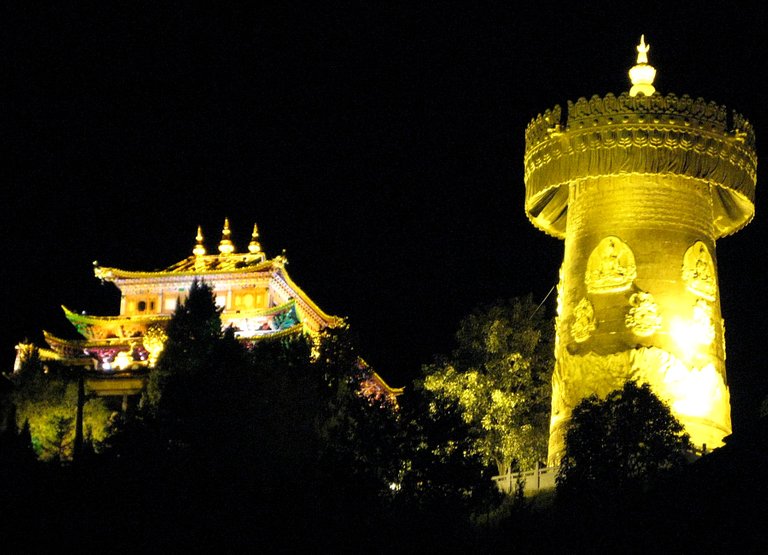

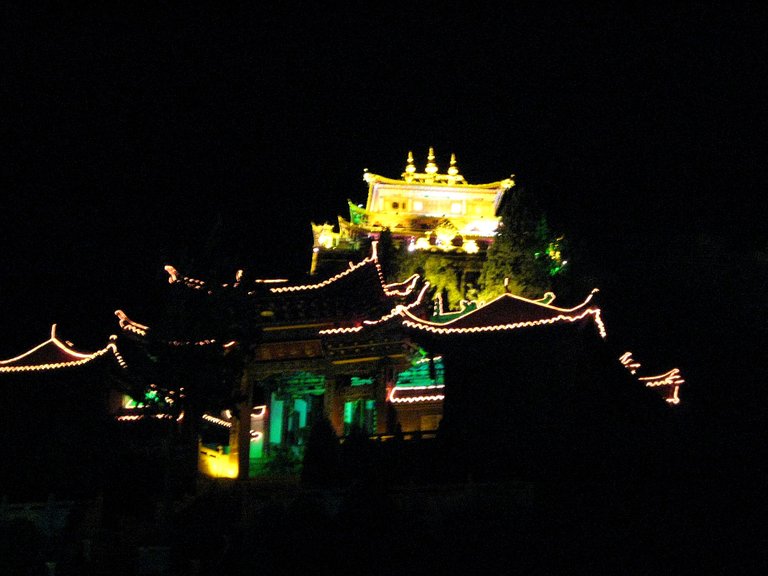
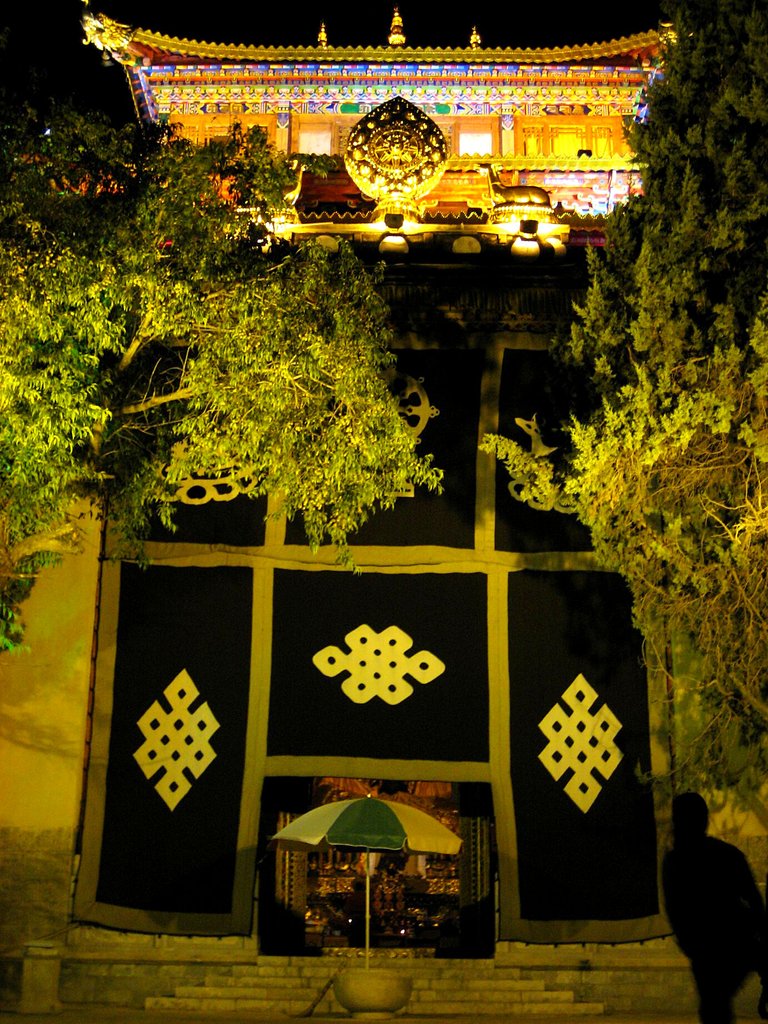
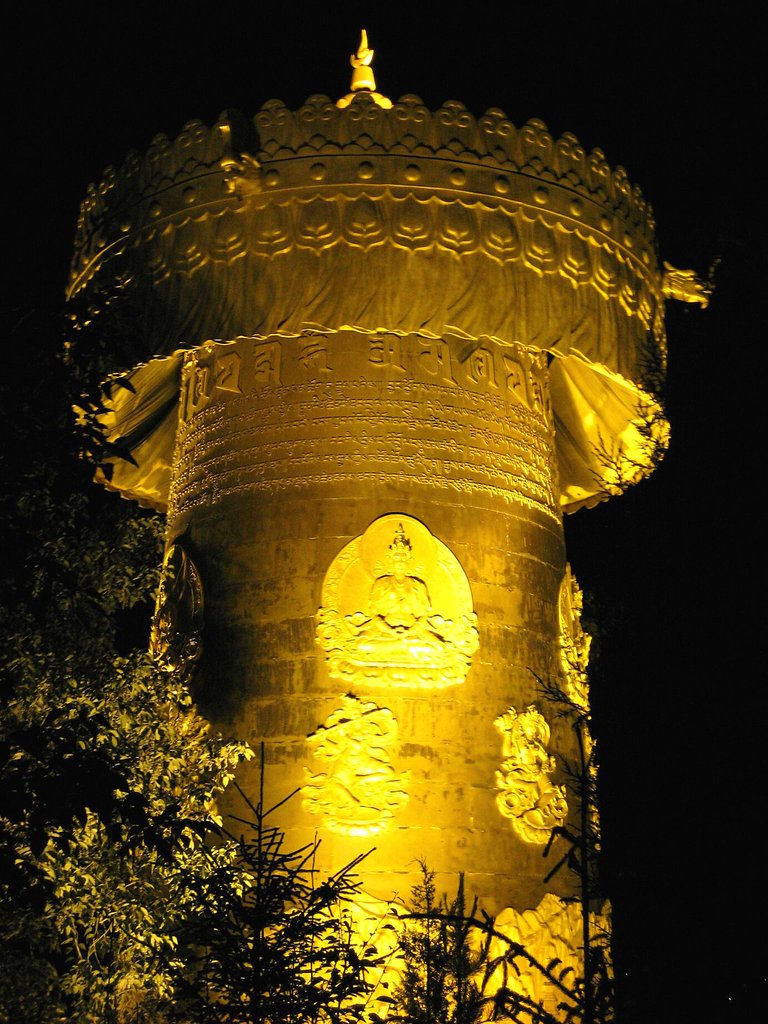
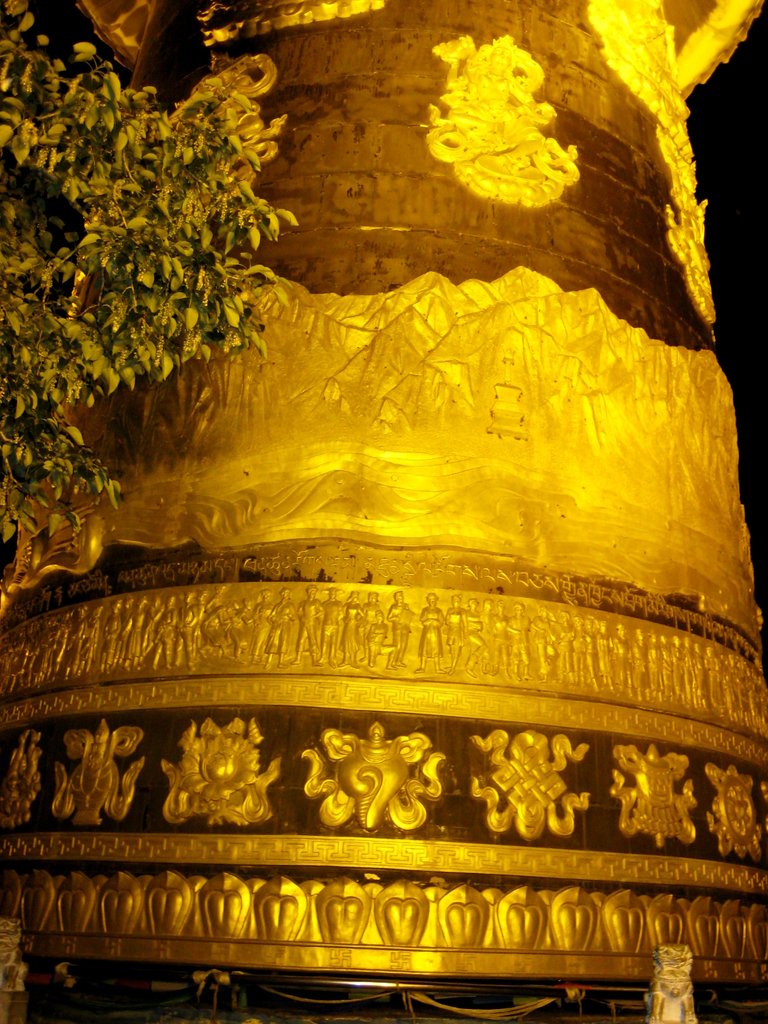
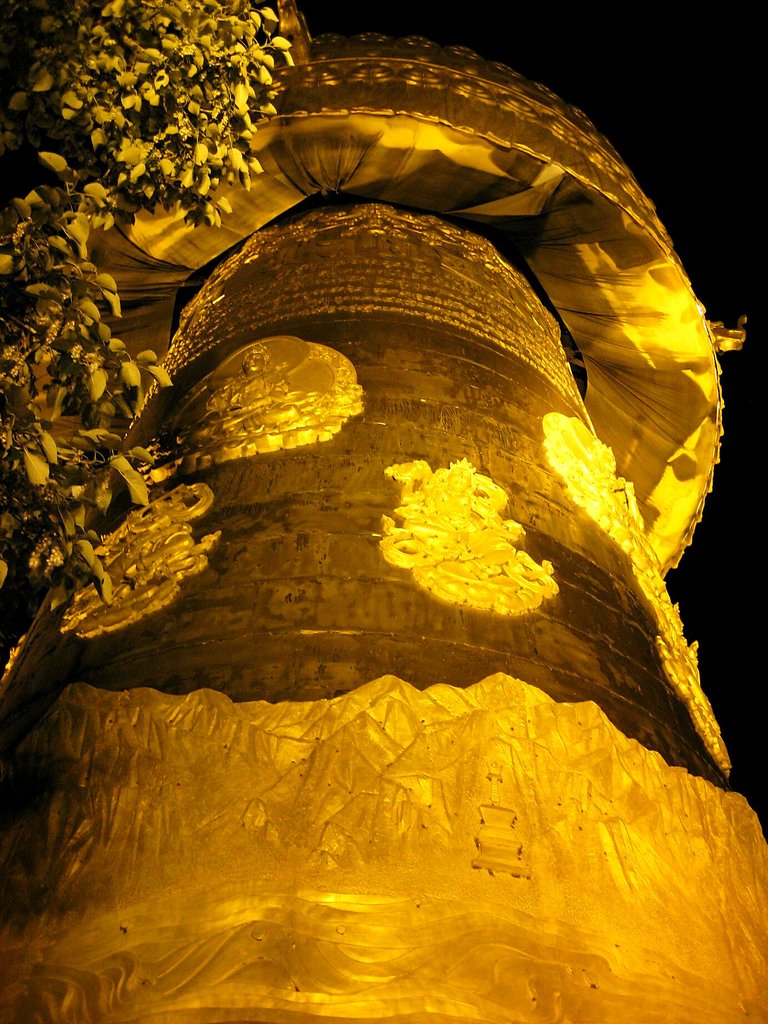
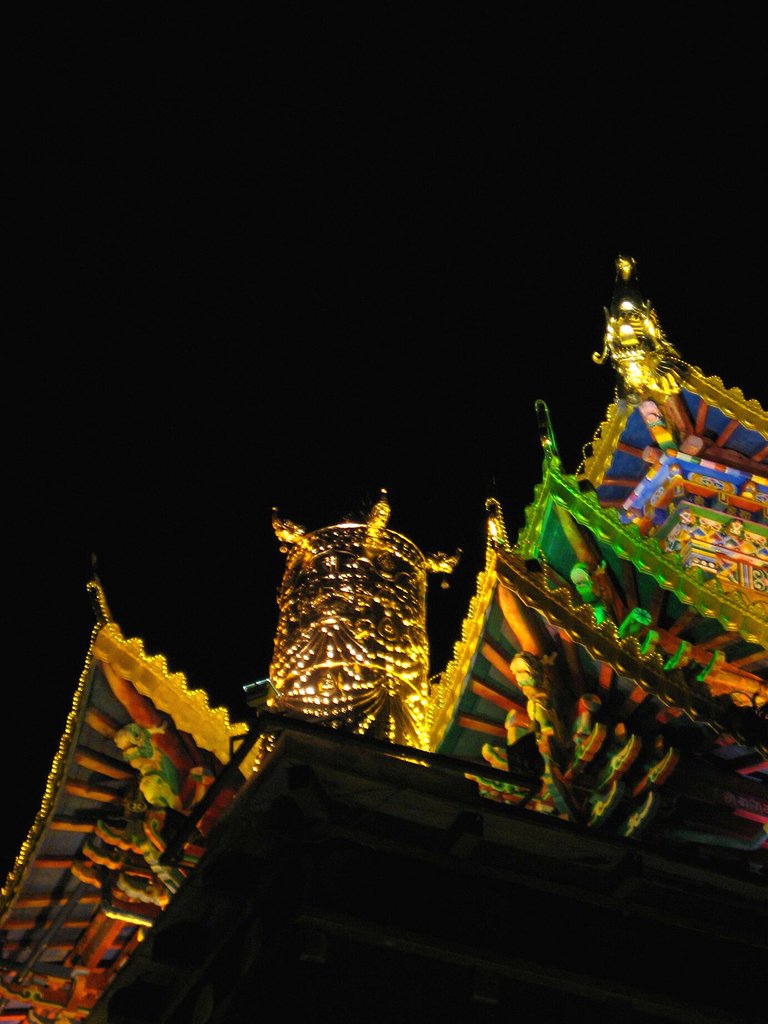



































Congratulations, your post has been added to Pinmapple! 🎉🥳🍍
Did you know you have your own profile map?
And every post has their own map too!
Want to have your post on the map too?
@tipu curate
Upvoted 👌 (Mana: 35/55) Liquid rewards.
Thank you!
Your content has been voted as a part of Encouragement program. Keep up the good work!
Use Ecency daily to boost your growth on platform!
Support Ecency
Vote for new Proposal
Delegate HP and earn more
Thanks!